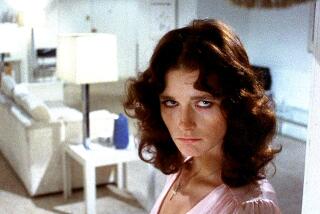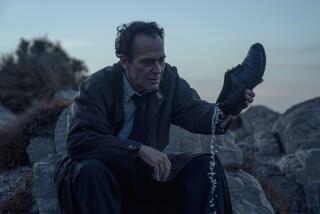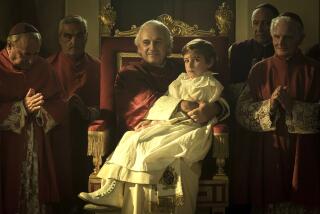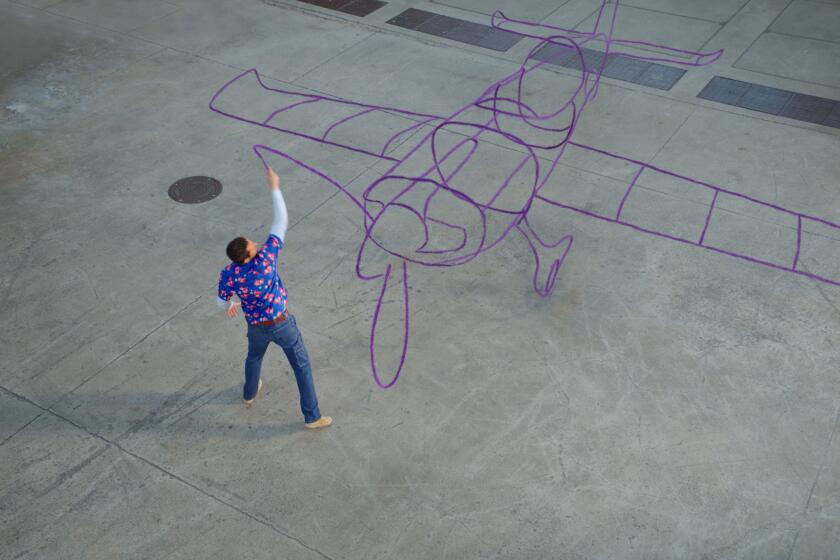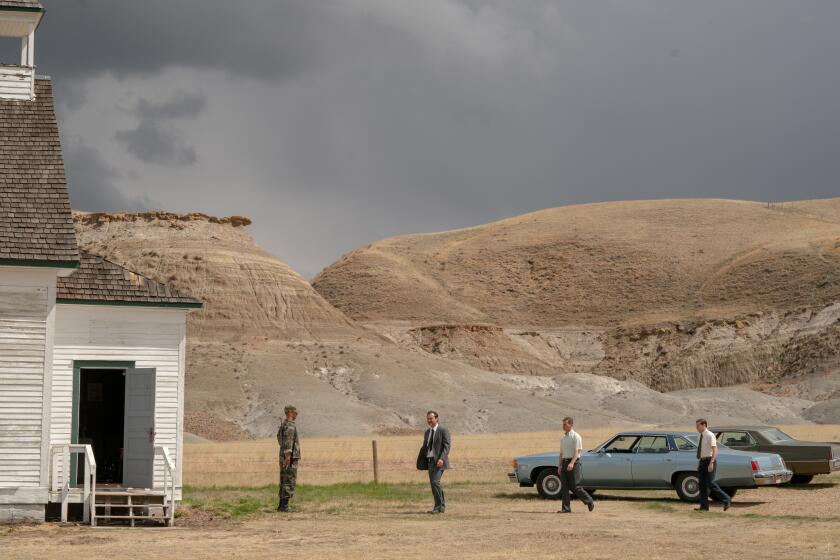Review: Tavianis’ ‘Padre Padrone,’ ‘Night of the Shooting Stars,’ ‘Kaos’ are poetic
Editor’s note: The Italian brothers Paolo and Vittorio Taviani have been making films for more than 60 years. Known for their empathetic portraits of common people, the Tavianis’ collaborations blend the tradition of neo-realism with earthly transcendence in their distinctive brand of storytelling. The one-week retrospective “A Taviani Trio” features three of their most noteworthy titles: “Padre Padrone,” “The Night of the Shooting Stars” and “Kaos.” Below are excerpts from The Times’ reviews when the films originally opened in Los Angeles.
“Padre Padrone” (“My Father, My Master”) is a work of art, a poetically realized piece of social realism that stands in the same relation to conventional movie entertainments as Picasso’s “Guernica” to a war bond poster.
Gavino Ledda, who is now in his late 30s, was the son and grandson of shepherds on Sardinia, men eking out a harsh, mean living for themselves and their families in a way of life that in 1940 had not much changed from 1840 or 1740.
SIGN UP for the free Indie Focus movies newsletter >>
Ledda tended flocks until he was 20 and still illiterate. He learned to read and write in the army and, fired by the power of words, broke from the family tradition, took a university degree in linguistics and wrote the best-selling autobiographical novel on which the movie is loosely based.
The team of Paolo and Vittorio Taviani adapted the script from Ledda’s book and co-directed the film. The photography by Mario Masini has the softness of painting, often, but it is painting in which the pastoral romanticism has long since yielded to the realities of rural poverty.
The villain is inertia, an economic captivity handed down the generations along with vendettas (there is one as a subplot in the movie) whose first causes no one can remember.
Yet “Padre Padrone” is an affirmation, a forceful, uncompromised, engrossing and affecting movie with that rare but cherished capacity to thrust us into the lives of others.
— Charles Champlin, March 1, 1978
“The Night of the Shooting Stars” is a jagged, amazing film, both breathtaking and satisfying at times.
Made by the brothers Paolo and Vittorio Taviani, “Shooting Stars” has a twinkling, fairy-tale opening that suggests we could be looking through Gepetto’s window at the bright, deep-blue night as a woman speaks — to a lover? to a child? In this moment she remembers back to 1944 when she was 6 years old and “everything was so unusual.”
And so it is, in Tuscany during the chaotic last moments of World War II. Unusual, barbaric, comic, anecdotal and epic, all at once. The villagers of the ancient town of San Martino have been told that the Germans have mined certain houses, which will be blown up in the pre-dawn hours.
The cast of characters is very large, but so carefully detailed for us by singular, revealing incidents that by the film’s end we mourn the lost ones like family members. As we witness these incidents, we are aware that they have been amplified and burnished by memory and that legends are being born. Yet the Tavianis seem to have transcended their own material as well, to create an extraordinary film, both as harsh as that sunlit battlefield and as fanciful as a child’s imagination.
— Sheila Benson, Feb. 16, 1983
In “Kaos,” Paolo and Vittorio Taviani make us feel that they have revealed the very soul of Sicily in their superb rendering of several tales by Luigi Pirandello.
The country’s harshly beautiful landscape mirrors the hard life and fierce passions of Pirandello’s people, yet “Kaos” is a warm and embracing experience, both amusing and rueful, its camera movement as graceful as baroque scrollwork.
The film’s title, taken from the region in which Pirandello was born, is paradoxical: In portraying the emotional chaos that affects so many of Pirandello’s people, the Taviani brothers and their co-adapter, the distinguished screenwriter Tonino Guerra, have created a work of rigorous artistic unity in which character and setting are one.
As a result, the film’s individual vignettes are not merely episodic but add up to a vision of life and nature that’s as breathtaking in its beauty as it is abundant in compassion. The Pirandello of “Kaos” is not the illustrious dramatist of neurosis and despair but the lesser known storyteller of peasant folklore.
In collaboration not only with Guerra but also composer Nicola Piovani and cameraman Giuseppe Lanci, who contributed such glorious and stirring images and music, the Tavianis have revived the timeless pleasure of storytelling for its own sake.
— Kevin Thomas, Feb. 27, 1986
------------
‘A Taviani Trio’
No MPAA rating
Running times: “Night of the Shooting Stars,” 1 hour, 45 minutes; “Padre Padrone,” 1 hour, 54 minutes; “Kaos,” 3 hours, 8 minutes
Playing: Laemmle Ahrya Fine Arts
More to Read
Only good movies
Get the Indie Focus newsletter, Mark Olsen's weekly guide to the world of cinema.
You may occasionally receive promotional content from the Los Angeles Times.
